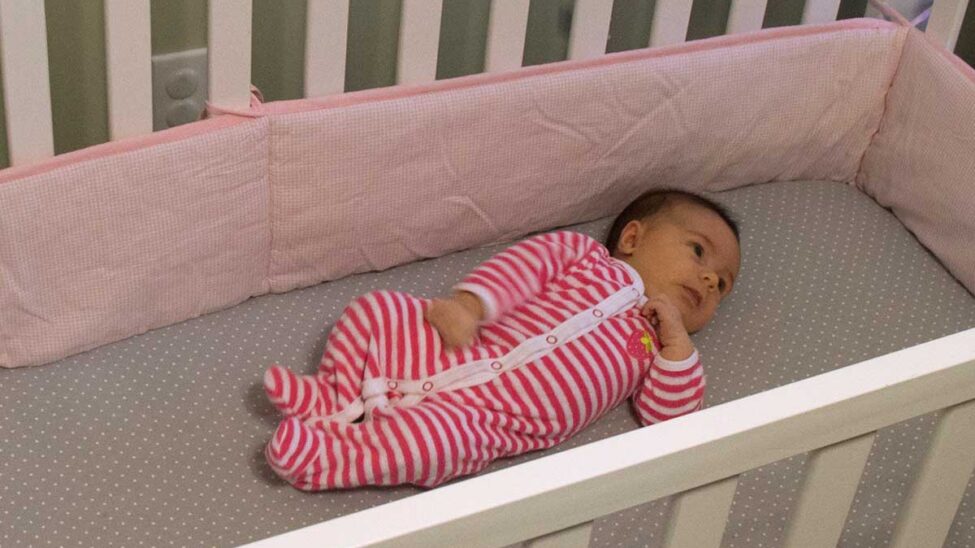
Why Crib Bumpers Spark So Much Debate
When I was decorating my daughter’s first nursery, I remember picking out a crib bumper that matched the soft pastel theme. It had little owls and clouds — just lovely. And like many first-time moms, I didn’t give it much thought. It seemed soft, safe, and everyone I knew used one.
But that was before I started digging deeper into sleep safety as part of my work. Crib bumpers are one of those products that look harmless and even helpful. They’re sold everywhere, marketed as preventing limb entrapment or head bumps. And, honestly, they do make a crib look cozy.
So why the growing concern? It’s not just fear-mongering. Over the past 10 years, I’ve seen more and more families come to me confused: why would something sold in baby stores be unsafe? And that’s exactly the issue — availability doesn’t always mean safety.
Parents often assume that if a product is on shelves, it must be safe. But baby product regulations sometimes lag behind the latest research.
The truth is, crib bumpers have become a symbol of the tricky balance between tradition, aesthetics, and science-backed safety.
What Pediatricians and Studies Actually Say
The American Academy of Pediatrics has been warning against crib bumpers for years. Their position is clear: soft bedding, including bumpers, increases the risk of suffocation, entrapment, and even SIDS. And they’re not alone. In 2022, the U.S. Congress passed the Safe Sleep for Babies Act, banning the sale of padded bumpers.
So why are they still in some homes? Partly because the change in perception takes time. And partly because, for years, the messaging was mixed. Many stores still sell “breathable” mesh bumpers, which sound safer — but aren’t recommended either.
A 2015 study published in The Journal of Pediatrics reviewed infant deaths linked to bumpers and found a steady rise over the years. Most cases involved suffocation, often when a baby’s face was pressed against the padding.
There is no evidence that crib bumpers prevent injury — but strong evidence they pose risks.
And that’s the line I’ve come to repeat a lot in my consultations.
Why Some Parents Still Choose Them
Even with the data, many families tell me the same thing: “My baby rolls and bumps her head — isn’t that dangerous too?” Or, “Her legs get stuck in the slats.” I get it. No one wants to hear their child cry out from a sudden jolt in the crib.
There’s also the emotional part. Bumpers can feel like a finishing touch to a lovingly curated nursery. They soften the hard look of wooden bars and make the crib feel more like a nest. I’ve worked with parents who say that, after months of infertility or loss, creating a beautiful, safe space for their baby is deeply healing.
So I don’t judge. But I do encourage families to look at the bigger picture. A bruised leg is very different from a blocked airway. Babies are surprisingly resilient — the risk of suffocation is not worth the aesthetic or comfort.
It’s normal to want everything perfect for your baby. But safety should always win over style.
Understanding that has helped many families feel empowered, not scared, when making choices.
Are There Any Safe Alternatives?
If you’re reading this thinking, “But I still want something to keep limbs from slipping through,” you’re not alone. Here’s where context matters.
Modern cribs have slats spaced specifically to prevent injuries. That’s why European and U.S. standards exist. So most of the time, arms or legs stuck between bars might look alarming, but they’re not harmful. It’s frustrating for a minute — and then it passes.
If you still want some kind of barrier, some parents use sleep sacks to limit movement or noise machines to mask brief cries. Neither replaces bumpers, but they address adjacent concerns in a safer way.
And yes, breathable mesh liners are still sold — but again, they’re not officially recommended. Safety organizations argue that babies can still get trapped or tangled. In my practice, I simply advise going without. After working with hundreds of families, I can say that within a few nights, most babies adjust just fine.
Sometimes the best thing you can do for your baby’s sleep is remove what’s unnecessary.
Sleep spaces should be simple. And when in doubt, go back to the basics: firm mattress, tight-fitting sheet, and nothing else.
What I Tell Families Who Still Feel Torn
When I get asked, “What would you do?” — I always go back to the science and my personal journey. I no longer use or recommend crib bumpers, even the cute ones. Not because I want to rob anyone of joy, but because I’ve seen too many close calls.
Safe sleep isn’t about doing everything — it’s about doing less, but doing it wisely.
One mom I worked with insisted on using bumpers — her baby kept waking up with little red marks on his head. Two weeks later, the baby was found with his face pressed into the padding. He was okay, thank goodness, but she threw out the bumpers the same day. It shook her deeply.
We all want peaceful sleep and safe spaces. Sometimes, letting go of what looks perfect is what gets us there.


